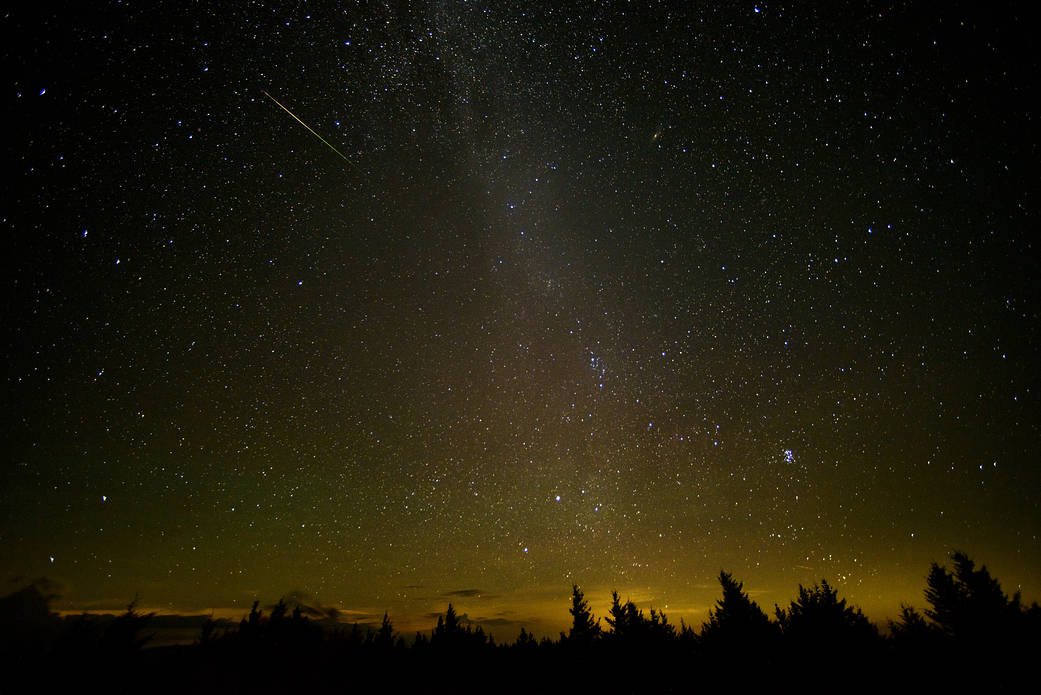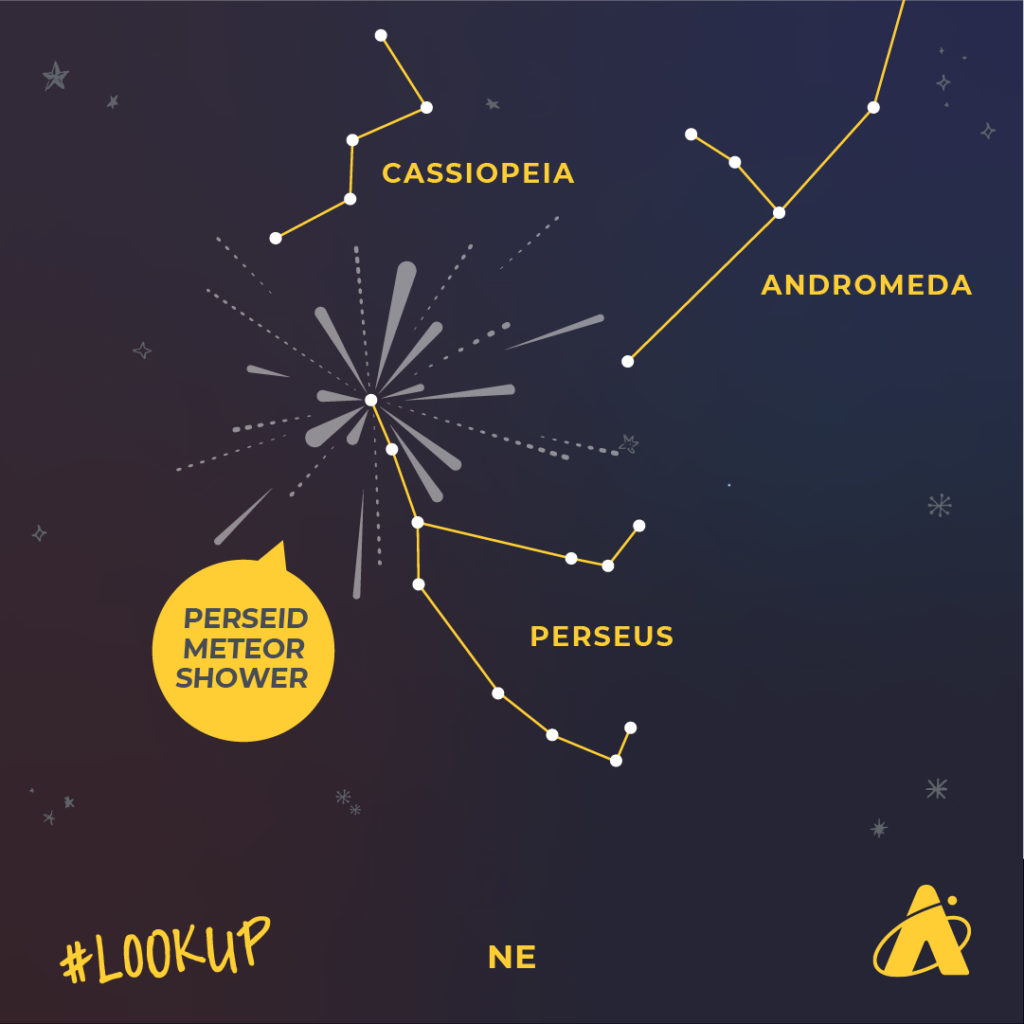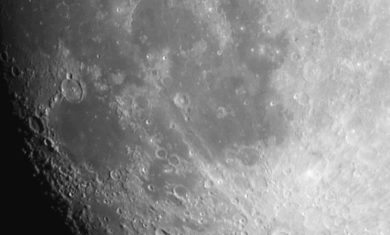Adler Skywatch: August 2021

Header Image: Snapshot of the annual Perseids Meteor Shower in 2016 from West Virginia. Image Credit: NASA/Bill Ingalls
Of the three major meteor showers that occur each year, only one takes place when the weather is reliably warm. The Perseid meteor shower is a highlight of this month, August 2021!

The Perseids peak around the 11th and the 12th this month. This timing is fortuitous: it’s generally best to look for meteors between midnight and dawn, and the waxing crescent Moon sets before 10:30 p.m. Central Daylight time on both nights. With no moonlight to blot out fainter meteors, there’s a better chance of seeing more Perseids. Under very clear, very dark skies, a peak of over fifty Perseid meteors per hour may be visible.
If you don’t want to stay up after midnight, don’t worry. The Perseid shower is known to include Earth-grazer meteors that appear to shoot upward from the northeastern horizon before midnight. Start looking for these meteors around 9pm Central Daylight time.
To view the meteor shower, find a safe place with as little light-pollution as possible. Look up and all around; let your eyes get used to the darkness for at least 20 to 30 minutes; and get comfortable—it takes some time to catch the Perseids as they dart across the sky. The quick streaks of light will appear at random times—one or two here, another one there, sometimes with a few minutes in between.
There are two other annual meteor showers when the peak meteor rate runs over 50 per hour. One of these is in January; the other is in December. So, if you want to try to see a major meteor shower without having to put up with freezing temperatures, check out the Perseids (especially this year) when the Moon’s light won’t affect viewing.
In planetary action this month, the brightest planet, Venus, is expected to be visible about 40 minutes after sunset, close to the westerly horizon. Though the sky is not yet fully dark, Venus is usually bright enough to be seen in a clear twilight sky. It starts the month nearly due-west; and it moves a little further south along the horizon each evening, reaching west-southwest by month’s end. The evenings of the 10th and the 11th, it’s not far from a slim, waxing crescent Moon. Venus sets about 90 minutes after the Sun this month.
After Venus sets, look toward the east-southeast horizon to spot the second-brightest planet, Jupiter. As has been the case for the past several months, Jupiter appears not very far from the planet Saturn. This month Saturn appears about 20 degrees to the right of Jupiter. Saturn is dimmer than Jupiter, but this month starts with Saturn being at opposition, or opposite the Sun in the sky. Being at opposition, Saturn is at its brightest at the start of the month. It gradually gets less bright as the month progresses, but it’s still brighter than the stars in its general vicinity. The night of the 20th and morning darkness of the 21st, a waxing gibbous Moon is near Saturn. The night of the 21st and morning of the 22nd, the Full Moon appears near Jupiter. The two planets are in the sky nearly all night. They are about 30 degrees high in the south around the midnight hours, and they set in the west-southwest in morning twilight.
The planet Mars has faded from its brightest point early in the year; and this month it’s so close to the Sun it is difficult if not impossible to see. Similarly, even though the planet Mercury is fairly bright this month, its nearness to the Sun in the sky will also make it difficult, if not impossible, to see.

New Moon: August 8
First Quarter Moon: August 15
Full Moon: August 22
Last Quarter Moon: August 30
Please note that these descriptions are for the Chicago area, using Central time.
Subscribe To Skywatch Wednesday This August
Tour the night sky with the Adler Planetarium’s Theaters Manager Nick, who uses cutting edge visualizations, NASA images, and astrophotography to show you what you can see in the night sky throughout the year.
Learn From Our Astronomy Educators
Watch exclusive live episodes of Sky Observers Hangout throughout the year on our YouTube channel! Learn how to observe upcoming cosmic happenings, enhance your astrophotography skills and see celestial objects through a telescope virtually with our astronomy educators.







